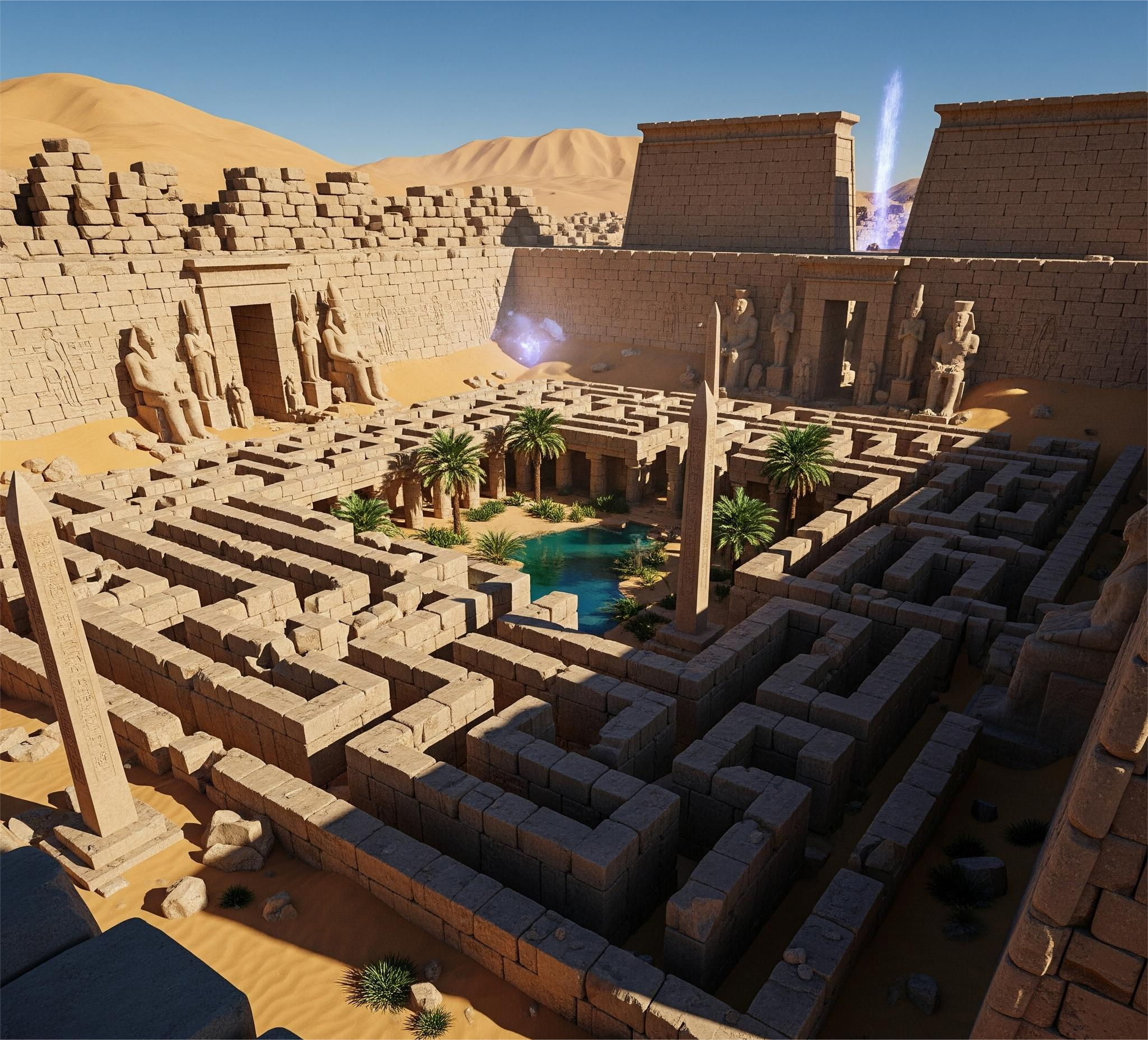When one thinks of ancient Egypt, the majestic Pyramids of Giza and the enigmatic Sphinx usually steal the spotlight. But nestled deep within ancient texts lies the story of a monument even more awe-inspiring, according to some early historians: the Egyptian Labyrinth. Described as a colossal structure of bewildering complexity and grandeur, it has tantalized scholars, adventurers, and archaeologists for centuries. Yet, unlike the pyramids, its physical remains have never been definitively found—raising the question: did the Labyrinth of Egypt truly exist, or is it merely a myth that spiraled into legend?
What the Ancient Sources Say
The primary accounts of the Egyptian Labyrinth come from Greek and Roman authors who were blown away by what they saw—or were told.
Herodotus, the “Father of History,” visited Egypt in the 5th century BCE and described the labyrinth in his Histories. He claimed it contained 3,000 rooms arranged in two levels—half underground and half above—and was more impressive than anything he’d seen in Egypt, even the pyramids.
“I found it greater than words can tell… the passages and the confusing turns defy all description.”
Strabo, writing in the 1st century BCE, also praised the labyrinth’s scale and complexity, noting that it stood near Lake Moeris, close to modern-day Hawara in the Fayoum region.
Pliny the Elder, in the 1st century CE, gave further details, suggesting it was built by Amenemhat III, a pharaoh of the 12th Dynasty (around 1800 BCE), and served as a funerary complex or administrative center.
Despite some differences in the descriptions, these sources consistently depict the Labyrinth as a massive and extraordinary building, far beyond the imagination.
Clues in the Sand: Is There Evidence?
Over the centuries, many have tried to locate the legendary labyrinth. The most promising lead lies in the Hawara archaeological site, south of Cairo.
In the 19th century, British archaeologist Flinders Petrie excavated at Hawara and discovered foundations of what appeared to be a huge building adjacent to the pyramid of Amenemhat III.
He found massive stone blocks, column fragments, and walls, all arranged in a grid-like pattern that could match ancient descriptions.
However, no intact “labyrinth” structure was found—only traces that suggested it had been dismantled or looted over the centuries.
Modern ground-penetrating radar and satellite imaging have detected subterranean anomalies in the area, but political instability and environmental conditions have made further excavation difficult.
Was It Really a Labyrinth?
It’s important to note that the term “labyrinth” in ancient texts may not mean a maze in the modern sense.
The Greek authors likely used the word metaphorically to describe a complex, multi-functional building filled with chambers, corridors, and courtyards.
Scholars suggest it may have been an administrative hub, temple complex, or necropolis associated with the cult of Sobek (the crocodile god) and the nearby sacred lake.
If so, the “Labyrinth” might not have been intended to confuse, but to impress—a symbol of centralized power and architectural mastery during Egypt’s Middle Kingdom.
A Forgotten Wonder?
So, did the Egyptian Labyrinth truly exist?
Yes, there is a strong consensus among historians and archaeologists that a grand structure once stood at Hawara, matching many aspects of the ancient descriptions.
What remains debated is how extensive and elaborate it really was—and whether the accounts were exaggerated by travelers awestruck by ruins or hearing secondhand tales.
Like the Library of Alexandria or the Colossus of Rhodes, it has become a lost marvel, forever hovering between history and legend.







